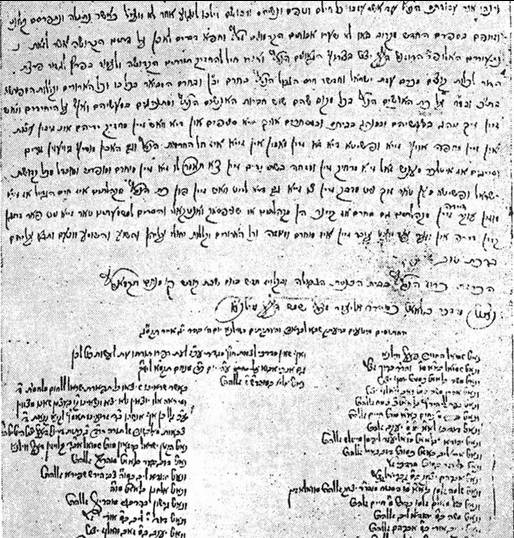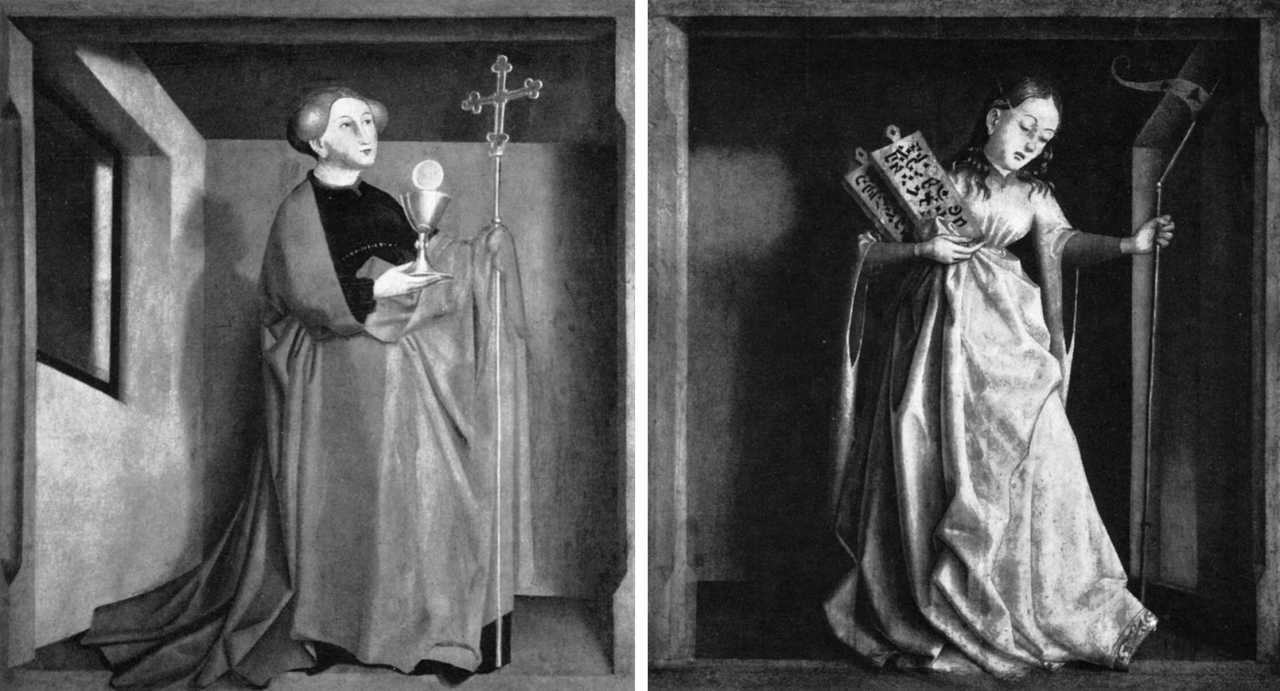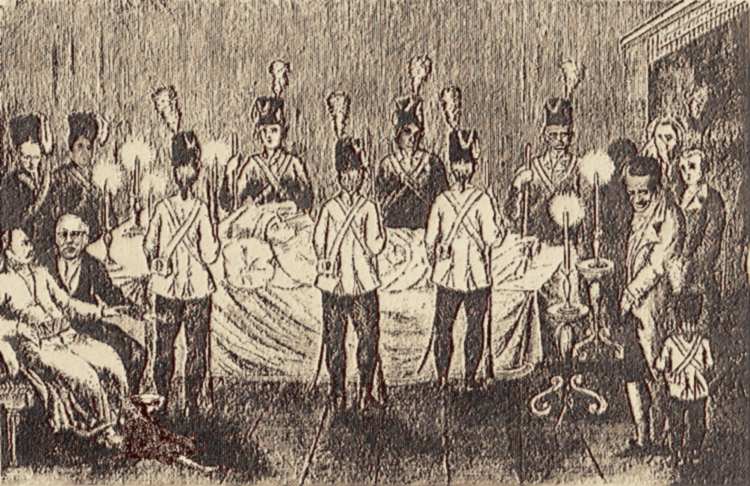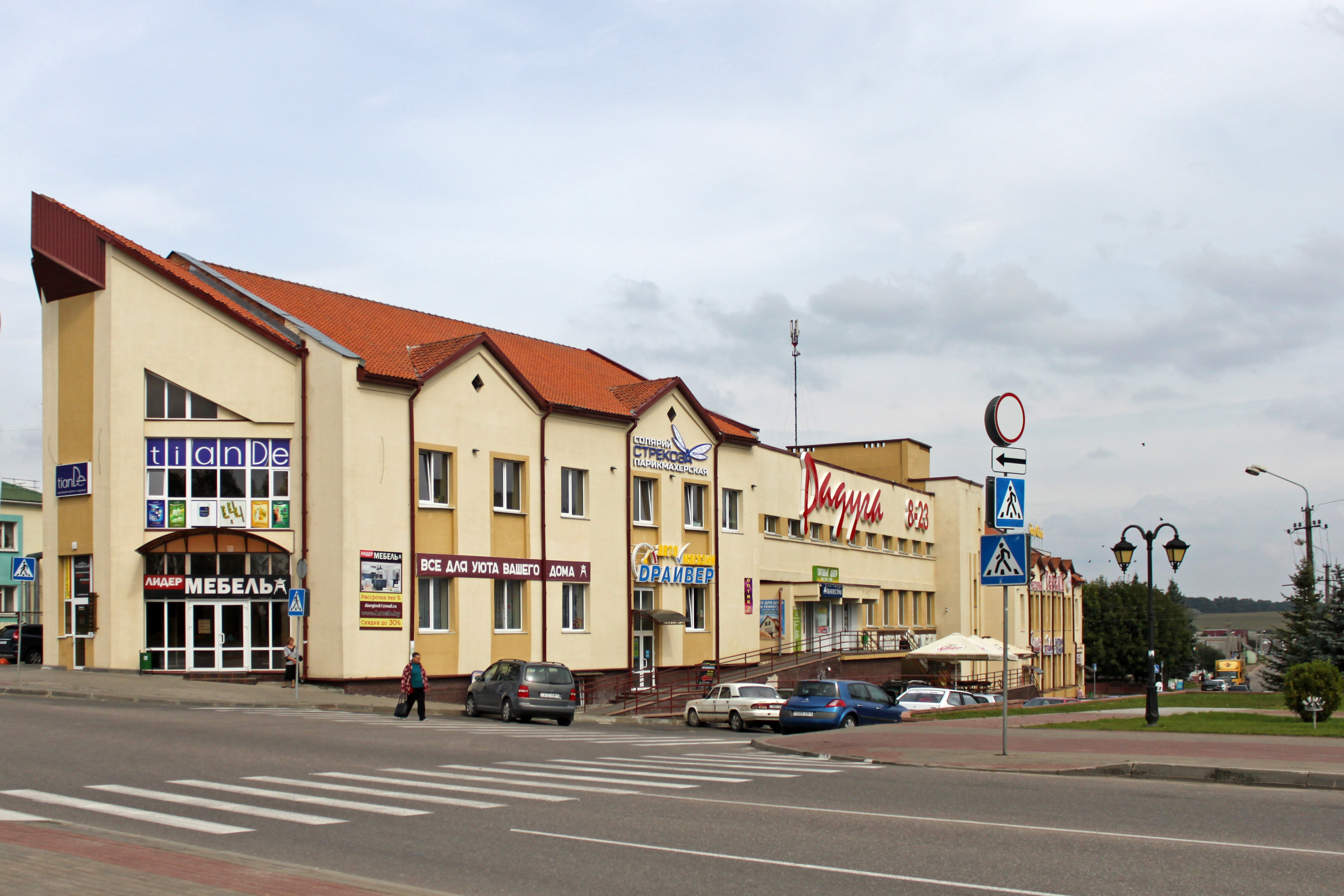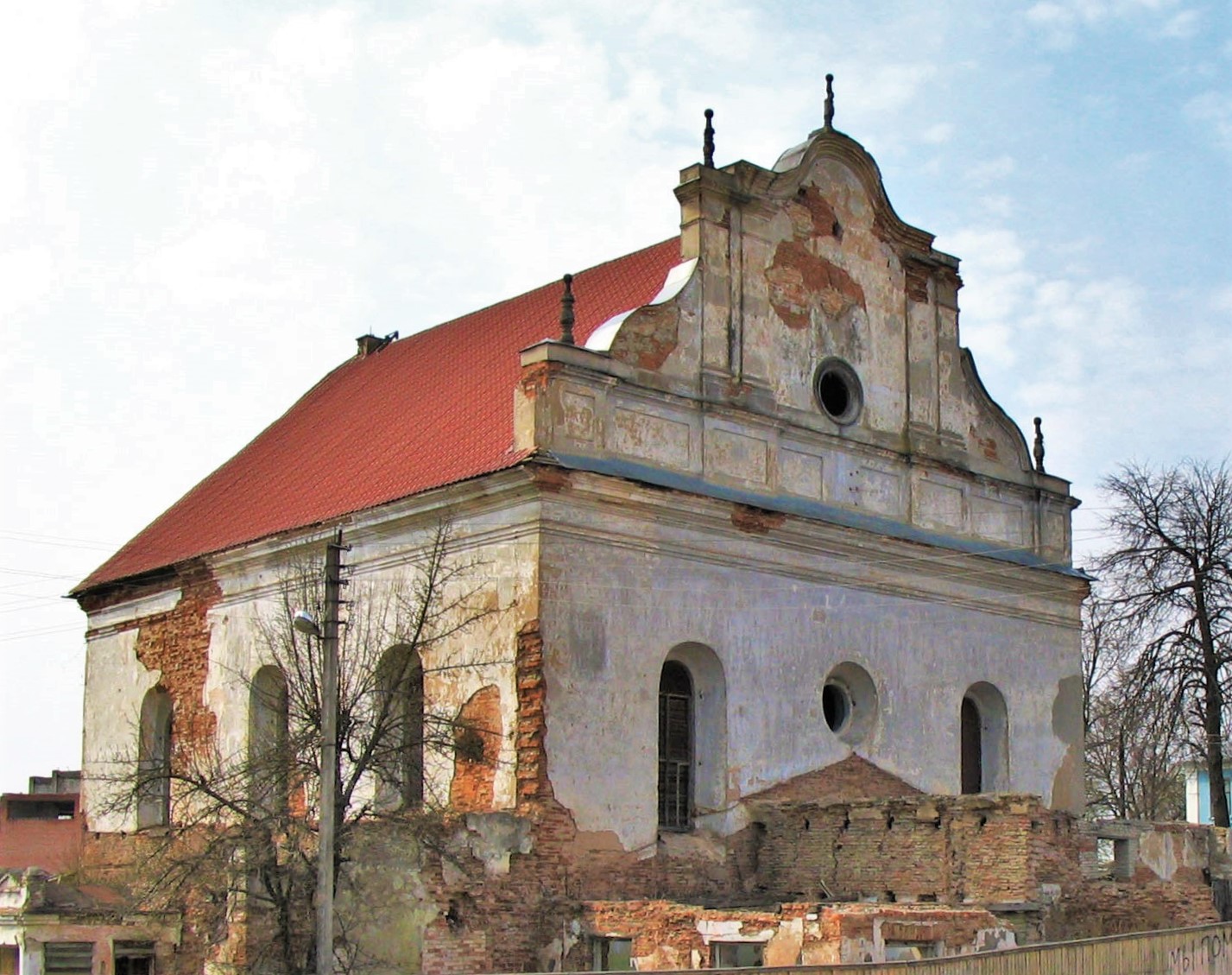|
Mitnagged
''Misnagdim'' (, "Opponents"; Sephardi pronunciation: ''Mitnagdim''; singular ''misnaged''/''mitnaged'') was a religious movement among the Jews of Eastern Europe which resisted the rise of Hasidism in the 18th and 19th centuries. The ''Misnagdim'' were particularly concentrated in Lithuania, where Vilnius served as the bastion of the movement, but anti-Hasidic activity was undertaken by the establishment in many locales. The most severe clashes between the factions took place in the latter third of the 18th century; the failure to contain Hasidism led the ''Misnagdim'' to develop distinct religious philosophies and communal institutions, which were not merely a perpetuation of the old status quo but often innovative. The most notable results of these efforts, pioneered by Chaim of Volozhin and continued by his disciples, were the modern, independent ''yeshiva'' and the Musar movement. Since the late 19th century, tensions with the Hasidim largely subsided, and the heirs of '' ... [...More Info...] [...Related Items...] OR: [Wikipedia] [Google] [Baidu] |
Jewish Schisms
Schisms among the Jews are cultural as well as religious. They have happened as a product of historical accident, geography, and theology. Samaritans The Samaritans are an ethnoreligious group of the Levant originating from the Israelites (or Hebrews) of the Ancient Near East. Ancestrally, Samaritans claim descent from the Tribe of Ephraim and Tribe of Manasseh (two sons of Joseph (patriarch), Joseph) as well as from the Levites,The Samaritan Update Retrieved 1 January 2017. who have links to ancient Samaria from the period of their entry into Canaan, while some Orthodox Jews suggest that it was from the beginning of the Babylonian captivity up to the Samaritan polity under the rule of Baba Rabba. According to Samaritan tradition, the split between them and the Judean-led Southern Israelites began during the biblical time of the priest Eli (b ... [...More Info...] [...Related Items...] OR: [Wikipedia] [Google] [Baidu] |
Jacob Frank
Jacob Joseph Frank ( he, יעקב פרנק; pl, Jakub Józef Frank; born Jakub Lejbowicz; 1726 – December 10, 1791) was a Polish Jews, Polish-Jewish religious leader who claimed to be the reincarnation of the self-proclaimed messiah Sabbatai Zevi (1626–1676) and also of the biblical patriarch Jacob. The Jewish authorities in Poland excommunicated Frank and his followers due to his heretical doctrines that included deification of himself as a part of a trinity and other controversial concepts such as neo-Carpocratian "purification through transgression". Frank arguably created a new denomination of Judaism, now referred to as Frankism, which incorporated some aspects of Christianity into Judaism. The development of Frankism was one of the consequences of the Jewish messiah, messianic movement of Sabbatai Zevi. This religious mysticism followed socioeconomic changes among the History of the Jews in Poland, Jews of Poland, History of the Jews in Lithuania, Lithuania and Histo ... [...More Info...] [...Related Items...] OR: [Wikipedia] [Google] [Baidu] |
Koidanov
Dzyarzhynsk or Dzerzhinsk, formerly Koidanova or Koydanava ( be, Дзяржы́нск, Dziaržynsk, formerly , ; russian: Дзержи́нск, Dzerzhinsk, formerly , ; pl, Kojdanów; yi, קוידאַנאָוו, Koydanov; lt, Kaidanava), in the Dzyarzhynsk District of Belarus, is a city with a history dating to the 11th century. History In the Middle Ages, the village belonged to the Radziwiłłs, a Polish–Lithuanian aristocratic family. Jewish community Jews lived in Koidanova as early as 1620. Koidanova became the site of a new Hasidic Jewish dynasty in 1833 when Rabbi Shlomo Chaim Perlow (1797–1862) became the first Koidanover Rebbe. He was succeeded by his son, Rabbi Boruch Mordechai Perlow (1818–1870), grandson, Rabbi Aharon Perlow (1839–1897), and great-grandson, Rabbi Yosef Perlow of Koidanov-Minsk (1854-1915), who was the last Koidanover Rebbe to live in the town. After World War I, the dynasty was moved to Baranovichi, then in Poland. In 1847, K ... [...More Info...] [...Related Items...] OR: [Wikipedia] [Google] [Baidu] |
Amdur (Hasidic Dynasty) (1921–1998), American public health researcher
{{disambig, surname ...
Amdur may refer to: * Amdur (Hasidic dynasty) *Indura, a village in Belarus * Ellis Amdur (born 1952), American martial arts writer * Mary Amdur Mary Ochsenhirt Amdur (February 18, 1921 – February 16, 1998) was an American toxicologist and public health researcher who worked primarily on pollution. She was charged with studying the effects of the 1948 Donora smog, specifically looking ... [...More Info...] [...Related Items...] OR: [Wikipedia] [Google] [Baidu] |
Pinsk
Pinsk ( be, Пі́нск; russian: Пи́нск ; Polish: Pińsk; ) is a city located in the Brest Region of Belarus, in the Polesia region, at the confluence of the Pina River and the Pripyat River. The region was known as the Marsh of Pinsk and is southwest of Minsk. The population is 138,415. The historic city has a restored city centre, with two-storey buildings from the 19th and early 20th centuries. The centre has become an active place for youths of all ages with summer theme parks and a new association football stadium, which houses the city's football club, FC Volna Pinsk. History Timeline up to WWI *In the 9th and 10th centuries, the town of Pinsk was majority Lithuanian *1097 – the first mention of Pinsk * 1241 – transfer of the Orthodox diocese from Turov * 1316 – after this date, Pinsk was incorporated into the Grand Duchy of Lithuania * 1396 – a Catholic church and a Franciscan monastery were erected * 1523 – Pinsk becomes a royal city, first owned by ... [...More Info...] [...Related Items...] OR: [Wikipedia] [Google] [Baidu] |
Karlin-Stolin (Hasidic Dynasty)
Karlin-Stolin is a Hasidic Judaism, Hasidic List of Hasidic dynasties, dynasty, originating with Rebbe Aharon of Karlin (I), Aaron ben Jacob of Karlin (Pinsk), Karlin in present-day Belarus. One of the first centres of Hasidim to be set up in Lithuanian Jews, Lithuania, many Lithuanian Hasidism, Lithuanian Hasidic groups are its offshoots. Today, the Karlin-Stolin dynasty is thriving once again, after being decimated by the Holocaust. Karlin-Stolin Hasidim can be found all over the world: Israel, the United States, Russia, England, Mexico, and Ukraine. The Karliner Hasidim are especially known for their custom to cry out in a strong and loud voice to God when praying. They are also known for their hospitality. Karlin-Stolin Hasidim established themselves in Eretz Yisrael in the mid-19th century, settling in Tiberias, Hebron, and Safed. In 1869, they redeemed the site of a former synagogue in Tiberias which had been built in 1786 by Rabbi Menachem Mendel of Vitebsk, but was destr ... [...More Info...] [...Related Items...] OR: [Wikipedia] [Google] [Baidu] |
Slonim (Hasidic Dynasty)
Slonim is a Hasidic dynasty originating in the town of Slonim, which is now in Belarus. Today, there are two Slonimer factions. Slonim, based in Jerusalem, and the Slanim community in Bnei Brak. They are two distinct groups today, and have many differences between them. The first Rebbe of Slonim, Rabbi Avraham Weinberg (1804–1883), was the author of ''Yesod HaAvodah''. In 1873, he sent a group of his grandchildren and other Hasidim to settle in Ottoman Palestine; they set up their community in Tiberias. Almost all of the Slonimer Hasidim in Europe perished at the hands of the Nazis in the Holocaust. The present-day Slonimer community was rebuilt from the Slonimer Hasidim who had settled in Israel. Outline of Slonimer dynasty Spiritual legacy * Rabbi Israel Baal Shem Tov, founder of Hasidism :* Rabbi Dov Ber, the Maggid (Preacher) of Mezeritch, disciple of the Baal Shem Tov ::* Rabbi Aaron Hagodol of Karlin, disciple of the Maggid ::: Rabbi Shlomo of Karlin, disciple of t ... [...More Info...] [...Related Items...] OR: [Wikipedia] [Google] [Baidu] |
Chabad
Chabad, also known as Lubavitch, Habad and Chabad-Lubavitch (), is an Orthodox Jewish Hasidic dynasty. Chabad is one of the world's best-known Hasidic movements, particularly for its outreach activities. It is one of the largest Hasidic groups and Jewish religious organizations in the world. Unlike most Haredi groups, which are self-segregating, Chabad operates mainly in the wider world and caters to secularized Jews. Founded in 1775 by Rabbi Schneur Zalman of Liadi, the name "Chabad" () is an acronym formed from three Hebrew words— (the first three sephirot of the kabbalistic Tree of Life) (): "Wisdom, Understanding, and Knowledge"—which represent the intellectual and kabbalistic underpinnings of the movement. The name Lubavitch derives from the town in which the now-dominant line of leaders resided from 1813 to 1915. Other, non-Lubavitch scions of Chabad either disappeared or merged into the Lubavitch line. In the 1930s, the sixth Rebbe of Chabad, Rabbi Yosef Yitzcha ... [...More Info...] [...Related Items...] OR: [Wikipedia] [Google] [Baidu] |
Numen (journal)
''Numen: International Review for the History of Religions'' is a bimonthly peer-reviewed academic journal covering the history of religions of any regions and times. It was established in 1954 and is published by Brill Publishers on behalf of the International Association for the History of Religions. The editors-in-chief are Laura Feldt (University of Southern Denmark), and Ülo Valk (University of Tartu). Abstracting and indexing The journal is abstracted and indexed in: According to Scopus, it has a 2018 SCImago Journal Rank The SCImago Journal Rank (SJR) indicator is a measure of the prestige of scholarly journals that accounts for both the number of citations received by a journal and the prestige of the journals where the citations come from. Rationale Citati ... of 0.232, ranking in the first quartile of both the 'History' and 'Religious Studies' categories. References External links * Publications established in 1954 Religion history journals English-lan ... [...More Info...] [...Related Items...] OR: [Wikipedia] [Google] [Baidu] |
Kabbalah
Kabbalah ( he, קַבָּלָה ''Qabbālā'', literally "reception, tradition") is an esoteric method, discipline and Jewish theology, school of thought in Jewish mysticism. A traditional Kabbalist is called a Mekubbal ( ''Məqūbbāl'' "receiver"). The definition of Kabbalah varies according to the tradition and aims of those following it, from its origin in medieval Judaism to its later adaptations in Western esotericism (Christian Kabbalah and Hermetic Qabalah). Jewish Kabbalah is a set of esoteric teachings meant to explain the relationship between the unchanging, eternal God in Judaism, God—the mysterious ''Ein Sof'' (, ''"The Infinite"'')—and the mortal, finite universe (God's Genesis creation narrative, creation). It forms the foundation of Mysticism, mystical religious interpretations within Judaism. List of Jewish Kabbalists, Jewish Kabbalists originally developed their own transmission of Primary texts of Kabbalah, sacred texts within the realm of Jewish traditio ... [...More Info...] [...Related Items...] OR: [Wikipedia] [Google] [Baidu] |
Gaon Of Vilna since 2017
{{disambiguation, surname ...
Gaon may refer to * Gaon (Hebrew), a non-formal title given to certain Jewish Rabbis ** Geonim, presidents of the two great Talmudic Academies of Sura and Pumbedita ** Vilna Gaon, known as ''the'' Gaon of Vilnius. * Gaon Music Chart, record chart in South Korea * Yehoram Gaon, Israeli singer * ''Gaon'' (film), a 2018 Indian drama film * Gaon (restaurant), a Michelin 3-starred restaurant in Seoul, South Korea South Korea, officially the Republic of Korea (ROK), is a country in East Asia, constituting the southern part of the Korea, Korean Peninsula and sharing a Korean Demilitarized Zone, land border with North Korea. Its western border is formed ... [...More Info...] [...Related Items...] OR: [Wikipedia] [Google] [Baidu] |
Talmud
The Talmud (; he, , Talmūḏ) is the central text of Rabbinic Judaism and the primary source of Jewish religious law (''halakha'') and Jewish theology. Until the advent of modernity, in nearly all Jewish communities, the Talmud was the centerpiece of Jewish cultural life and was foundational to "all Jewish thought and aspirations", serving also as "the guide for the daily life" of Jews. The term ''Talmud'' normally refers to the collection of writings named specifically the Babylonian Talmud (), although there is also an earlier collection known as the Jerusalem Talmud (). It may also traditionally be called (), a Hebrew abbreviation of , or the "six orders" of the Mishnah. The Talmud has two components: the Mishnah (, 200 CE), a written compendium of the Oral Torah; and the Gemara (, 500 CE), an elucidation of the Mishnah and related Tannaitic writings that often ventures onto other subjects and expounds broadly on the Hebrew Bible. The term "Talmud" may refer to eith ... [...More Info...] [...Related Items...] OR: [Wikipedia] [Google] [Baidu] |
